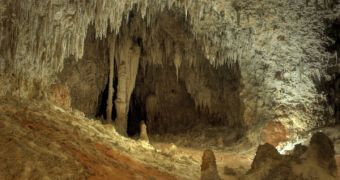The Precambrian Age, which spanned from the formation of our planet, some 4,500 million years ago to approximately 542 million years ago, is perhaps the most important in terms of planetary evolution. That is to say, at that time, bacteria, microbes, and other microorganisms developed the ability to synthesize oxygen from water, in a process that has since been named “photosynthesis.” This seemingly unimportant trait meant that the entire atmosphere of the planet was over billions of years oxygenated, which allowed for vegetation and, finally, more complex life forms to appear.
“The evolutionary success of single-celled microbes during the Precambrian brought the Earth to life and set the stage for the evolution of multi-cellular organisms that thrive today,” Pennsylvania State University (PSU) expert Jenn Macalady, who has recently been the leader of a biological expedition in the Italian Frasassi cave system, explains. The goal of the mission has been to get a glimpse of how microbes might have looked like all those billions of years ago, and caves around the world are always the best bet for finding them.
Basically, as far as timelines go, the team has had to go further back than the ages of the dinosaurs, and find a portion of the caves that could reveal how the world looked like more than half a billion years ago. Unfortunately, microorganisms do not leave much of a trail behind, as they decompose very quickly and are also very small, to begin with. So, the goal of the expedition has been to analyze modern microbes that exist in oxygen-free (anoxic), dark regions of our planet. Such closed systems can be found mostly underwater, but also in deep and very large caves, where certain chemical conditions or anomalies do not allow oxygen to pass through.
That is to say, the microbes that nowadays live there experience roughly the same conditions as their ancestors did, billions of years ago. But accessing the organisms is a very difficult job. The topography of some of the caves that are most appropriate for this kind of research leaves no place for errors, and only skilled speleologists can access them. That's why Macalady is working with numerous cave experts and guides, and has her team preparing for the rough demands of such an exploration all year-round, until the summer season.
“Every expedition offers the possibility of discovering previously unknown life forms and important clues to the history of life,” she says. Thus far, the work has been sponsored by both the National Science Foundation and the NASA American space agency, which is very interested in learning how these organisms live in such hostile places. The results may be applied in future planetary exploration missions, where organisms from Earth may be introduced to other planets or moons, to see if they grow or not.

 14 DAY TRIAL //
14 DAY TRIAL //